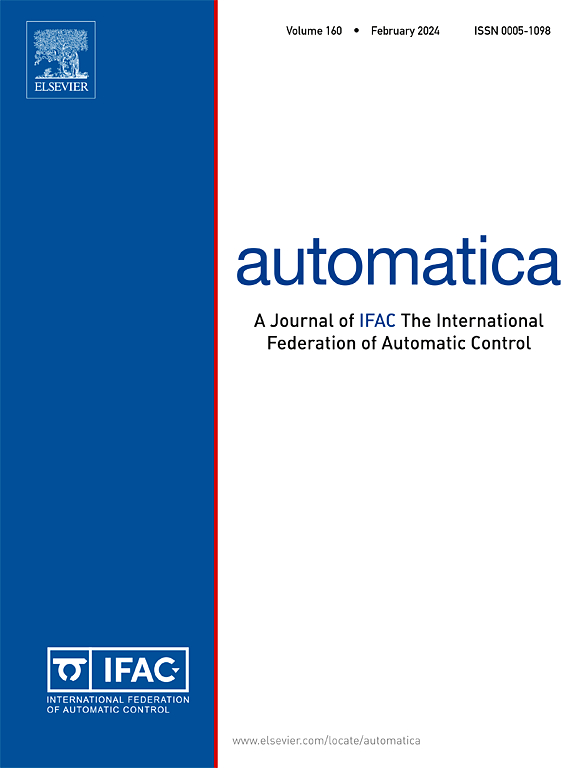A new input design method for online active fault diagnosis based on sum-of-ratios optimization
IF 5.9
2区 计算机科学
Q1 AUTOMATION & CONTROL SYSTEMS
引用次数: 0
Abstract
This paper proposes a new input design method for set-based active fault diagnosis (AFD) of discrete-time linear time-invariant (LTI) systems. The principle of set separation tendency-based AFD methods focuses on designing inputs to increase the separation tendency of output sets associated with different system modes and to discriminate inconsistent system modes step by step. Compared to existing works that aim to enlarge the separation tendency of output zonotopes, a new and enhanced characterization of the dispersity of a group of output zonotopes is introduced. Specifically, this dispersity is defined as the sum of ratios of the center distance to the total size of two different zonotopes in each pair, effectively describing the separation tendency of a group of output zonotopes. The objective of enlarging the separation tendency of output zonotopes is to maximize the newly introduced dispersity of output zonotopes at each time instant, achieved by formulating the design of one-step input as a sum-of-ratios problem. After a series of transformations, this problem is effectively solved using the 01 mixed integer quadratic programming framework. At the end of this paper, a numerical example is provided to illustrate the effectiveness of the proposed method.
基于比率和优化的在线主动故障诊断输入设计新方法
针对离散线性时不变系统基于集的主动故障诊断,提出了一种新的输入设计方法。基于集分离倾向的AFD方法的原理侧重于设计输入,以增加与不同系统模式相关的输出集的分离倾向,并逐步区分不一致的系统模式。与现有的旨在扩大输出带异构分离倾向的工作相比,本文引入了一种新的、增强的对一组输出带异构分散性的表征。具体来说,这种分散性被定义为每对中两个不同的带异体的中心距离与总尺寸之比的总和,有效地描述了一组输出带异体的分离趋势。扩大输出分区的分离倾向的目标是最大化新引入的输出分区在每个时刻的分散性,通过将一步输入的设计表述为比率和问题来实现。经过一系列变换,利用0−1混合整数二次规划框架有效地求解了该问题。最后通过一个算例说明了该方法的有效性。
本文章由计算机程序翻译,如有差异,请以英文原文为准。
求助全文
约1分钟内获得全文
求助全文
来源期刊

Automatica
工程技术-工程:电子与电气
CiteScore
10.70
自引率
7.80%
发文量
617
审稿时长
5 months
期刊介绍:
Automatica is a leading archival publication in the field of systems and control. The field encompasses today a broad set of areas and topics, and is thriving not only within itself but also in terms of its impact on other fields, such as communications, computers, biology, energy and economics. Since its inception in 1963, Automatica has kept abreast with the evolution of the field over the years, and has emerged as a leading publication driving the trends in the field.
After being founded in 1963, Automatica became a journal of the International Federation of Automatic Control (IFAC) in 1969. It features a characteristic blend of theoretical and applied papers of archival, lasting value, reporting cutting edge research results by authors across the globe. It features articles in distinct categories, including regular, brief and survey papers, technical communiqués, correspondence items, as well as reviews on published books of interest to the readership. It occasionally publishes special issues on emerging new topics or established mature topics of interest to a broad audience.
Automatica solicits original high-quality contributions in all the categories listed above, and in all areas of systems and control interpreted in a broad sense and evolving constantly. They may be submitted directly to a subject editor or to the Editor-in-Chief if not sure about the subject area. Editorial procedures in place assure careful, fair, and prompt handling of all submitted articles. Accepted papers appear in the journal in the shortest time feasible given production time constraints.
 求助内容:
求助内容: 应助结果提醒方式:
应助结果提醒方式:


